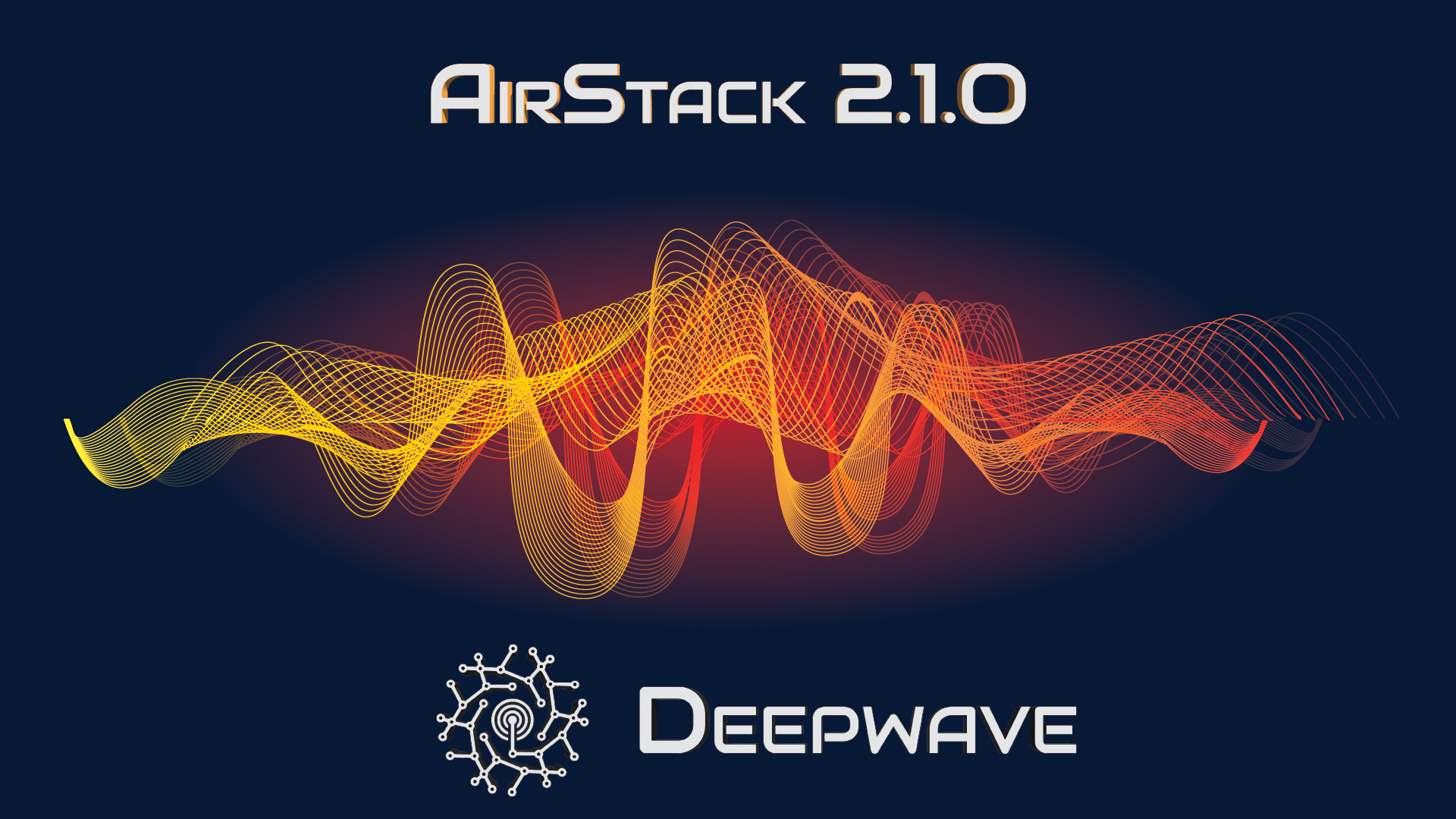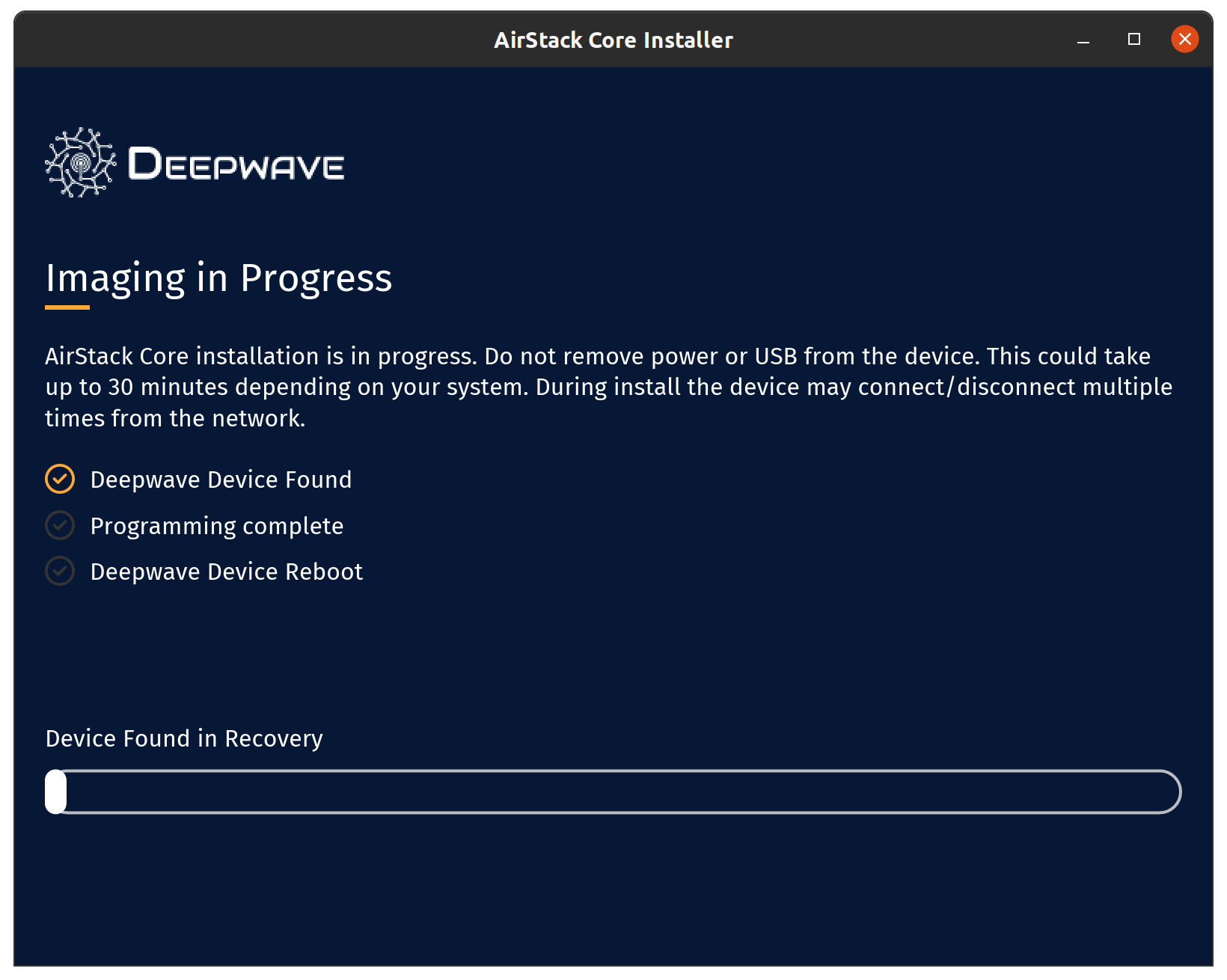Deepwave is very, very pleased to announce the release of AirStack Core 2.1.
The Core 2.1 release includes a number of enhancements to help AIR-T super users break new ground in RF Intelligence – such as versatile sampling capabilities – as well as features that support the AIR-T’s ‘it just works’ user experience. This feature-packed release includes many highlights, including support for existing ML pipelines developed with Conda, the ability to reflash AIR-T firmware for clean upgrades, and more.

New Upgrade Tool
We have taken all of the difficulty out of programming a software defined radio!

After hearing customer feedback surrounding issues upgrading SDR sensors, we created a new intuitive tool to flash/update AirStack Core. With little-to-zero configuration required by the customer, the tool will upgrade the AirStack Core Linux distribution, update all of the drivers, and flash the firmware.
Details about this new tool can be found here.
Master Clock Rate Control
The master clock rate can now be controlled on the device through the AirStack Core API. This allows for much greater flexibility in the sample rates that can be supported, including LTE and 5G.. For details, please see the related section in the updated programming guide.
LED Control
Have you ever wanted to know what state a transceiver is in simply by looking at it? With the AIR7310 series, we added tri-tone LEDs to make this possible. Now, depending on the state of each channel, these LEDs will illuminate with a color that can be used to understand what is happening. We believe that this will significantly help with debugging application development (and it also looks really good). For example, each channel’s respective LED will now illuminate green when the channel is actively in use (i.e., transmitting/receiving samples). We will continue to develop new alerts with this feature in future versions of AirStack Core.
New Programming Guide
We have overhauled our documentation, tutorials, examples, and other related information to assist our customers. A key component of this overhaul is the creation of an AirStack Core Programming Guide to provide an intuitive and thorough guide to integrate AI and signal processing applications into AirStack Core.
Click here to view the Programming Guide.
Conda Support
We have added a key integration feature, conda virtual environments, back. These virtual environments simplify the management of Python environments and dependencies across heterogeneous hardware, including the onboard GPU and CPU. This ensures reproducible builds and compatibility for deploying AI and signal processing applications on the AIR-T.
See the Conda Tutorial for details.
Docker Support
Docker containers are now supported on the newer generation hardware. This tutorial is provided for users interested in this workflow.
Availability
All new AIR7310-B AIR-Ts are compatible with AirStack 2.1. Earlier models should continue to use AirStack 1.0.
Customers with an AIR7310 should upgrade their units with the newly provided software tool.
